The ‘W’ Type 1946 - 1961
From 1939 with the outbreak of World War II until it ended in 1945 S&D were entirely engaged in war production apart from a small repair service for existing customers.
1946 Arrival of the ‘W’ type
The ‘W’ Type was launched in 1946/47 with conventional steering wheel and gear controls. The ‘W’ denoted wheel steering. One of the first ‘W’s is shown above with a Newcastle type body. SD’s own petrol engine was fitted and engine, gearbox and axles were all produced in SD’s Icknield Way works.

1948? The Fore & Aft tipper body becomes available
The Fore & Aft tipper body was introduced around 1948 and immediately became popular due to its ability to compress the refuse when tipped forward. The system was based on the German Faun design and was produced in order to meet the increasing amounts of less dense refuse being discarded.

1952 Cosmetic changes had taken place
By this time the ‘W’ sported larger headlights as seen here. The sign on the radiator denotes that a Perkins diesel engine is fitted. Diesel engines became an option from 1954, alongside SD’s petrol engine.
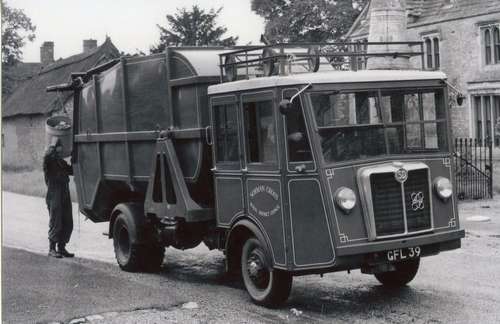
1953 The Bulk loader became available
This enabled Paladin containers to be handled by the Fore & Aft tipper. The Paladin system of refuse containers was designed for bulk collection of refuse from flats and apartments, using specially adapted vehicles. This adaption of the Fore & Aft tipper permitted S&D to gain a share of this market.
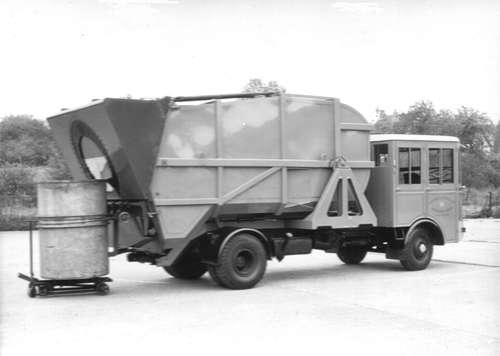
Mid 1950’s modifications to the rear of the Fore & Aft body
Alterations to the F&A body were introduced so that the rear of the body had a vertical flat service and the protrusion was created on the rear door. Compare this version with the one shown above under the 1952 title. The trailer which was normally used for separate waste paper collection was popular with many authorities.
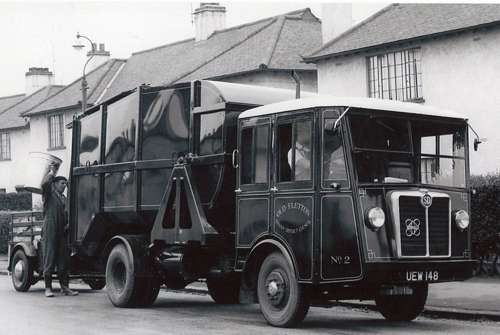
1957 The Power Press gives added compaction
From 1957 the ‘W’ type Fore & aft tipper had the option of Power Press. This can be identified by the hydraulic operating cylinders fitted to the roof of the body as shown. Also the hydraulic hoses on the tipping frame pivot indicate that the body was fitted with power press which increased the compression ratio to give an extra 50% load. From 1957 the majority of customers for Fore & Aft tippers specified the Power Press.
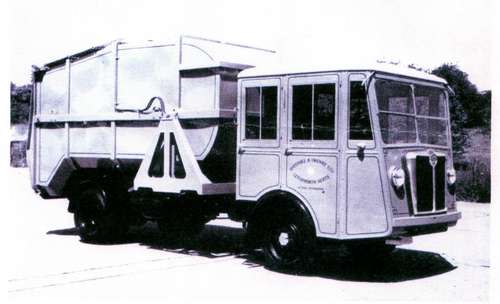
Late 1950’s saw an update to the cab and indicators
The four piece windscreen, with the ability to be opened, was replaced by a two piece design, also the semaphore arm indicators were replaced by indicator lights, and the door handles recessed as shown above.
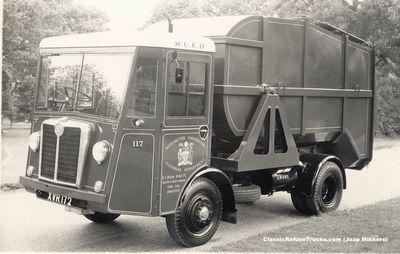
A total of 3,200 ‘W’ Types were produced. [Kaleidoscope caption 128]
By the time the TW was coming into production 2,500 Fore & Aft tippers had been made. [Kaleidoscope caption 134]